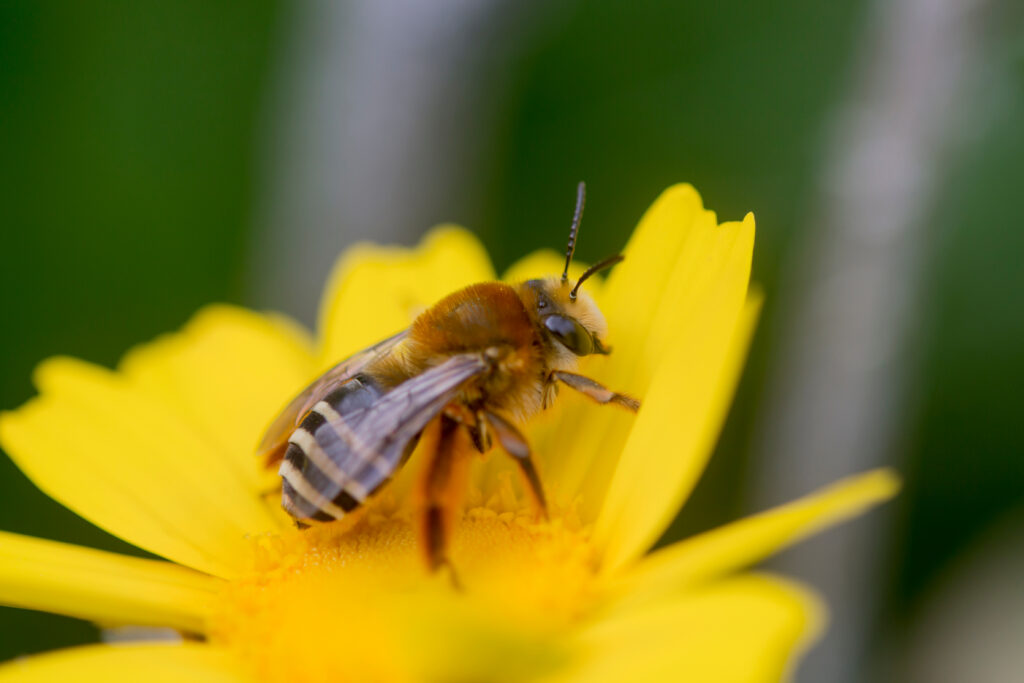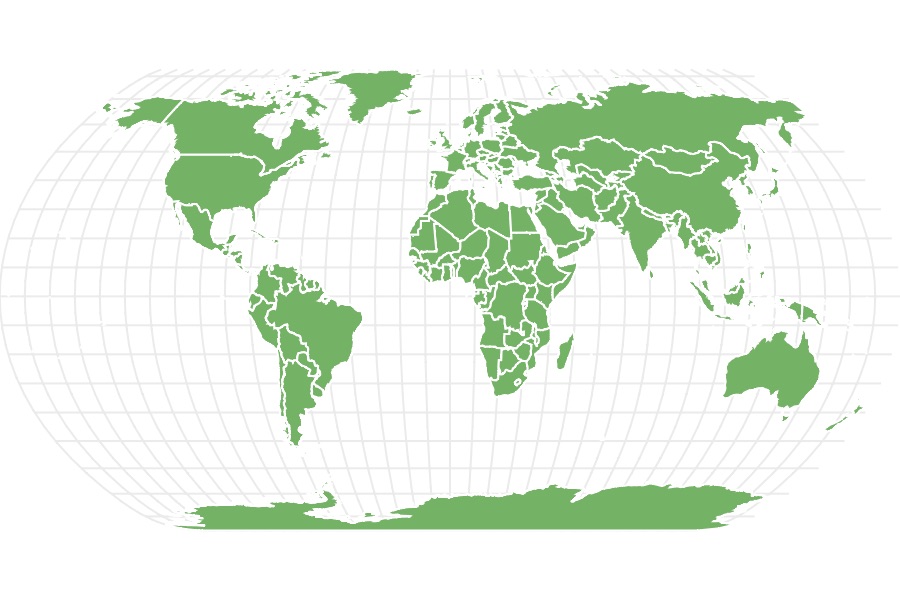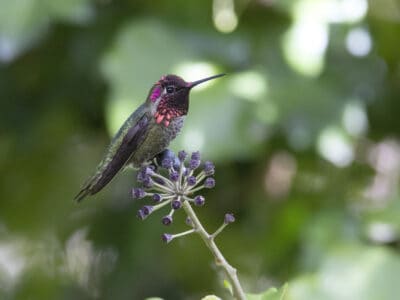Squash Bee
Squash bees are astonishingly more efficient than honey bees at pollinating squash plants!
Advertisement
Squash Bee Scientific Classification
Read our Complete Guide to Classification of Animals.
Squash Bee Conservation Status
Squash Bee Facts
- Prey
- N/A
- Main Prey
- N/A
- Name Of Young
- leave
- Group Behavior
- Solitary
- Fun Fact
- Squash bees are astonishingly more efficient than honey bees at pollinating squash plants!
- Estimated Population Size
- Undetermined
- Biggest Threat
- habitat loss, agricultural chemicals
- Most Distinctive Feature
- Xenoglossa are buzz pollinators
- Distinctive Feature
- Squash bees have a strong preference for the pollen and nectar of plants in the Cucurbitaceae family.
- Other Name(s)
- gourd bee
- Gestation Period
- N/A
- Temperament
- mild
- Wingspan
- 0.25- 0.75 inches (6-18 mm)
- Training
- N/A
- Optimum pH Level
- N/A
- Incubation Period
- 3-5 days
- Age Of Independence
- emergence
- Age Of Fledgling
- emergence
- Average Spawn Size
- 1-30 eggs
- Litter Size
- N/A
- Habitat
- subterranean burrows nesr squash plants.
- Predators
- birds, spiders, small mammals
- Diet
- Herbivore
- Average Litter Size
- N/A
- Lifestyle
- Diurnal
- Crepuscular
- Favorite Food
- Squash blossoms
- Type
- Peponapis/Xenoglossa
- Common Name
- squash bee
- Special Features
- Xenoglossa long tongue
- Origin
- Americas
- Location
- Americas
- Slogan
- N/A
- Group
- N/A
- Nesting Location
- subterranean burrows
- Age of Molting
- various times throughout larval stage
Squash Bee Physical Characteristics
- Color
- Brown
- Yellow
- Black
- Gold
- Orange
- Caramel
- Ginger
- Skin Type
- Exoskeleton
- Top Speed
- -27 mph
- Lifespan
- 3 weeks - 1 year
- Weight
- less than 1 ounce
- Height
- 0.1-0.3 inches
- Length
- 0.25- 0.75 inches (6-18 mm)
- Age of Sexual Maturity
- at emergence
- Age of Weaning
- N/A
- Venomous
- No
- Aggression
- Low
View all of the Squash Bee images!
Are you ready to squash your preconceived notions and learn about a bee that’s got some serious game? Meet the squash bee – the MVP of the pollination world (or at least in the world of squash plants). Don’t let their size fool you, these bees are a force to be reckoned with on the court, um, I mean, in the garden. There are currently 15 recognized species of squash bees in the genus Peponapis and 12 in the genus Xenoglossa.
These bees get their common name from their preference for plants in the squash family Cucurbitaceae, on which they forage for pollen and nectar. Squash bees are apex pollinators for bottle gourds (Lagenaria siceraria), zucchini (Cucurbita pepo), muskmelon (Cucumis melo) et al. All recognized species of Peponapis and Xenoglossa live exclusively in the Americas. They are crucial pollinators of native plants and commercial crops in North America, particularly in the Southwestern United States and Mexico. So, grab your racket, er, I mean, your reading glasses, and let’s soar into the wonderful world of squash bees!
Scientific Name
Peponapis is a genus of solitary bees native to North and Central America that are commonly referred to as squash bees because they specialize in pollinating plants in the Cucurbitaceae family, which includes squash, pumpkins, and melons. The genus name Peponapis is derived from the Greek words pepon, meaning melon, and apis, meaning bee. Therefore, bees in the genus Peponapis are melon bees. Melons are contained in the family Cucurbitaceae, which consists of 965 species across 95 genera.
Xeno is Greek for strange or stranger, while glossa is Greek for tongue. Squash bees in the genus Xenoglossa are sometimes called long-tongued bees because they have elongated tongues that are adapted to collecting nectar from long, tubular flowers. These bees are also known for their ability to perform buzz pollination, which is required for pollinating certain plants in the family Cucurbitaceae.
Appearance
Bees in the genera Peponapis and Xenoglossa are small to large-sized bees, measuring between 0.25- 0.75 inches (6-18 mm) in length, with similar wingspans. Females of the genus are usually larger than males. Their wings are transparent with red veins. They have black or dark brown bodies with yellow or creamy-white bands or stripes on their abdomens. They are covered in dense setae (singularly seta) or hairs that help them collect pollen. Males have yellow faces in many species.

Squash bees’ abdomens are mostly black with slender yellow bands or stripes.
©Claire Anna Jones/Shutterstock.com
Squash Bee: Behavior
Squash bees, like other solitary bees, are generally non-aggressive and will only sting if provoked. They are active early in the morning as soon as the squash blossoms open. Bees in these genera are considered specialist pollinators, foraging on plants in the Cucurbitaceae family. Flower blossoms in the family Cucurbitaceae tend to open early and close by noon. Males sometimes spend the afternoon and night in the closed blossoms in order to surprise females on the early morning pollen run.
As solitary bee species, females nest individually in the ground, usually in sunny areas near their preferred squash plants. They construct small, unbranched burrows with linear brood cells. They provision the cells with pollen and nectar, depositing a single egg in each. Once the cells are filled, they seal the entrance to the burrow. The larvae develop inside the burrow and emerge as adult bees the following spring.
Bees in both genera are specialized pollinators of plants in the Cucurbitaceae family. They have a relatively short flight season that coincides with the blooming period of squash plants. These bees are important pollinators of Cucurbitaceae crops and play a vital role in ensuring a successful harvest.
Bees in the genus Xenoglossa are buzz pollinators. Buzz pollination, also known as sonication, is a unique method of pollen collection. The bee grabs onto a flower and vibrates its wing muscles, producing a high-frequency buzzing that causes the pollen to be dislodged from the flower’s anthers and onto the bee’s body. This allows the bee to collect more pollen efficiently than if it were just using its mouthparts to collect the pollen. Some squash plants have flowers that require buzz pollination to release their pollen, making bees in the genus Xenoglossa important pollinators for these crops.
Habitat
Bees in the genus Peponapis are found primarily in North America and Mexico. They are ground-nesting bees that construct their nests in underground burrows in sandy or well-drained soils near squash plants. Xenoglossa bees are found in South America, Central America, and Mexico. Like Peponapis, they are also ground-nesting bees and build their nests in the soil near squash plants.
Squash Bee: Diet
Bees in the genera are oligoleges or specialist foragers. Squash bees have a strong preference for the pollen and nectar of plants in the Cucurbitaceae family including squash (Cucurbita), loofah (Luffa), and gherkin (Cucumis anguria). Females are equipped with scopae (singularly scopa), specialized hairs on their legs that are adapted to collect and carry the abundant pollen produced by these plants. Both genera of bees are highly adapted to this specialized diet, foraging on cucumber (Cucumis sativus), canteloupe (Cucumis), and watermelon (Citrullus). They are astonishingly more efficient than honey bees (Apis mellifera) for this purpose.
Predators and Threats
Predators of squash bees include:
- Insects such as ants, spiders, and assassin bugs prey on squash bees.
- Birds, particularly those that forage on the ground such as sparrows and finches, feed on squash bees.
- Small mammals like shrews, mice, and voles prey on ground-nesting bees like squash bees.
- Skunks feed on squash bees and other ground-nesting bees. They are particularly attracted to the scent of the flowers of cucurbit plants, which squash bees also find attractive.
Threats that Peponapis and Xenoglossa face include
- Habitat loss: The destruction and fragmentation of natural habitats from commercial agriculture and urbanization, reduces the availability of suitable nesting and foraging sites for squash bees.
- Pesticide exposure: Squash bees exposed to pesticides, either through direct contact with treated crops or through the ingestion of contaminated pollen and nectar, are less viable. Pesticides reduce their reproductive success, impair their foraging abilities, and in the direst scenarios led to their mortality.
- Climate change: Changes in temperature and precipitation patterns affect the timing of flowering in cucurbit plants, which can lead to a mismatch between the availability of flowers and the emergence of squash bees.
Squash Bee: Conservation Status and Population
The conservation status of specific bees in the genera Peponapis and Xenoglossa varies depending on the species and geographic region. While Peponapis and Xenoglossa are not currently listed as endangered, their conservation status should be closely monitored. Individual species have been documented to be declining in some regions of the U.S., specifically in Indiana when Xenoglossa kansensis, the Kansas squash bee is considered threatened. Squash bees as a group are not closely monitored across their distribution which does not allow for meaningful population data. However, the individual species being monitored and documented, are telling the same story: population numbers are declining at a concerning rate. Squash bees are among the most efficient pollinators of squash and related crops, and as such steps should be taken to ensure their continued survival.
Squash Bee: Lifecycle
Squash bees only live about one year. The adults emerge in the late spring or early summer and die in the fall. Most of their life is spent underground. The females of the genera devote the majority of their lives to constructing subterranean nests and provisioning brood cells. Once the brood cells are provisioned, an individual egg is deposited in each cell. When the egg hatches, the larva eats the pollen that its mother provided for it. After a few weeks, the larva pupates in its brood cell where it will overwinter in a state of suspended development called diapause. In the spring, the adult bee emerges from its underground home. The cycle begins again.
Species of Squash Bees
The following is a complete list of presently identified species of squash bees.
- Peponapis apiculata
- Peponapis atrata
- Peponapis azteca
- Peponapis citrullina
- Peponapis crassidentata
- Peponapis fervens
- Peponapis limitaris
- Peponapis melonis
- Peponapis michelbacherorum
- Peponapis pacifica
- Peponapis parkeri
- Peponapis pruinosa
- Peponapis smithi
- Peponapis timberlakei
- Peponapis utahensis
- Xenoglossa angustior
- Xenoglossa dugesi
- Xenoglossa fulva
- Xenoglossa gabbii
- Xenoglossa howardi
- Xenoglossa kansensis
- Xenoglossa consensus
- Xenoglossa mustelina
- Xenoglossa patricia
- Xenoglossa podophilia
- Xenoglossa spriuna
- Xenoglossa strenua
Squash Bee FAQs (Frequently Asked Questions)
What do squash bees look like?
Bees in the genera Peponapis and Xenoglossa are small to large-sized bees, measuring between 0.25- 0.75 inches (6-18 mm) in length, with similar wingspans. Females of the genus are usually larger than males. Their wings are transparent with red veins. They have black or dark brown bodies with yellow or creamy-white bands or stripes on their abdomens. They are covered in dense setae (singularly seta) or hairs that help them collect pollen. Males have yellow faces in many species.
Are squash bees buzz pollinators?
Bees in the genus Xenoglossa are buzz pollinators. Buzz pollination, also known as sonication, is a unique method of pollen collection. The bee grabs onto a flower and vibrates its wing muscles, producing a high-frequency buzzing that causes the pollen to be dislodged from the flower’s anthers and onto the bee’s body. This allows the bee to collect more pollen efficiently than if it were just using its mouthparts to collect the pollen. Some squash plants have flowers that require buzz pollination to release their pollen, making bees in the genus Xenoglossa important pollinators for these crops.
However, squash bees in the genus Peponapis are classified as buzz pollinators.
Where do squash bees live?
Bees in the genus Peponapis are found primarily in North America and Mexico. They are ground-nesting bees that construct their nests in underground burrows in sandy or well-drained soils near squash plants. Bees in the Xenoglossa are found in South America, Central America, and Mexico. Like Peponapis, they are also ground-nesting bees and build their nests in the soil near squash plants.
What do squash bees eat?
Bees in the genera are oligoleges or specialist foragers. Squash bees have a strong preference for the pollen and nectar of plants in the Cucurbitaceae family including squash (Cucurbita), loofah (Luffa), and gherkin (Cucumis anguria). Females are equipped with scopae (singularly scopa), specialized hairs on their legs that are adapted to collect and carry the abundant pollen produced by these plants. Both genera of bees are highly adapted to this specialized diet, foraging on cucumber (Cucumis sativus), canteloupe (Cucumis), and watermelon (Citrullus). They are astonishingly more efficient than honey bees (Apis mellifera) for this purpose.
What is the conservation status of the squash bee?
The conservation status of specific bees in the genera Peponapis and Xenoglossa varies depending on the species and geographic region. While Peponapis and Xenoglossa are not currently listed as endangered, their conservation status should be closely monitored. Individual species have been documented to be declining in some regions of the U.S., specifically in Indiana when Xenoglossa kansensis, the Knsas squash bee is considered threatened.
Thank you for reading! Have some feedback for us? Contact the AZ Animals editorial team.
Sources
- usda.gov, Available here: https://www.fs.usda.gov/wildflowers/pollinators/pollinator-of-the-month/squash_bees.shtml
- etymologynerd.com, Available here: https://www.etymologynerd.com/blog/pumpkins-past
- wikipedia.org, Available here: https://en.wikipedia.org/wiki/Cucurbitaceae
- buzzaboutbees.net, Available here: https://www.buzzaboutbees.net/which-bees-buzz-pollinate.html
- backyardecology.net, Available here: https://www.backyardecology.net/squash-bees/
- honeybeesuite.com, Available here: https://www.honeybeesuite.com/wednesday-word-file-sonication/
- bugguide.net, Available here: https://bugguide.net/node/view/93251
- colostate.edu, Available here: https://extension.colostate.edu/wp-content/uploads/2022/03/BeginnerBeeFieldGuide_LowRezWeb_28Feb2022.pdf
- uni.edu, Available here: https://nathistoc.bio.uci.edu/hymenopt/Xenoglossa.htm
- in.gov, Available here: https://www.in.gov/dnr/nature-preserves/files/np-Endangered-Threatened-Rare-and-Extirpated-Spiders-and-Insects-of-Indiana.pdf

















